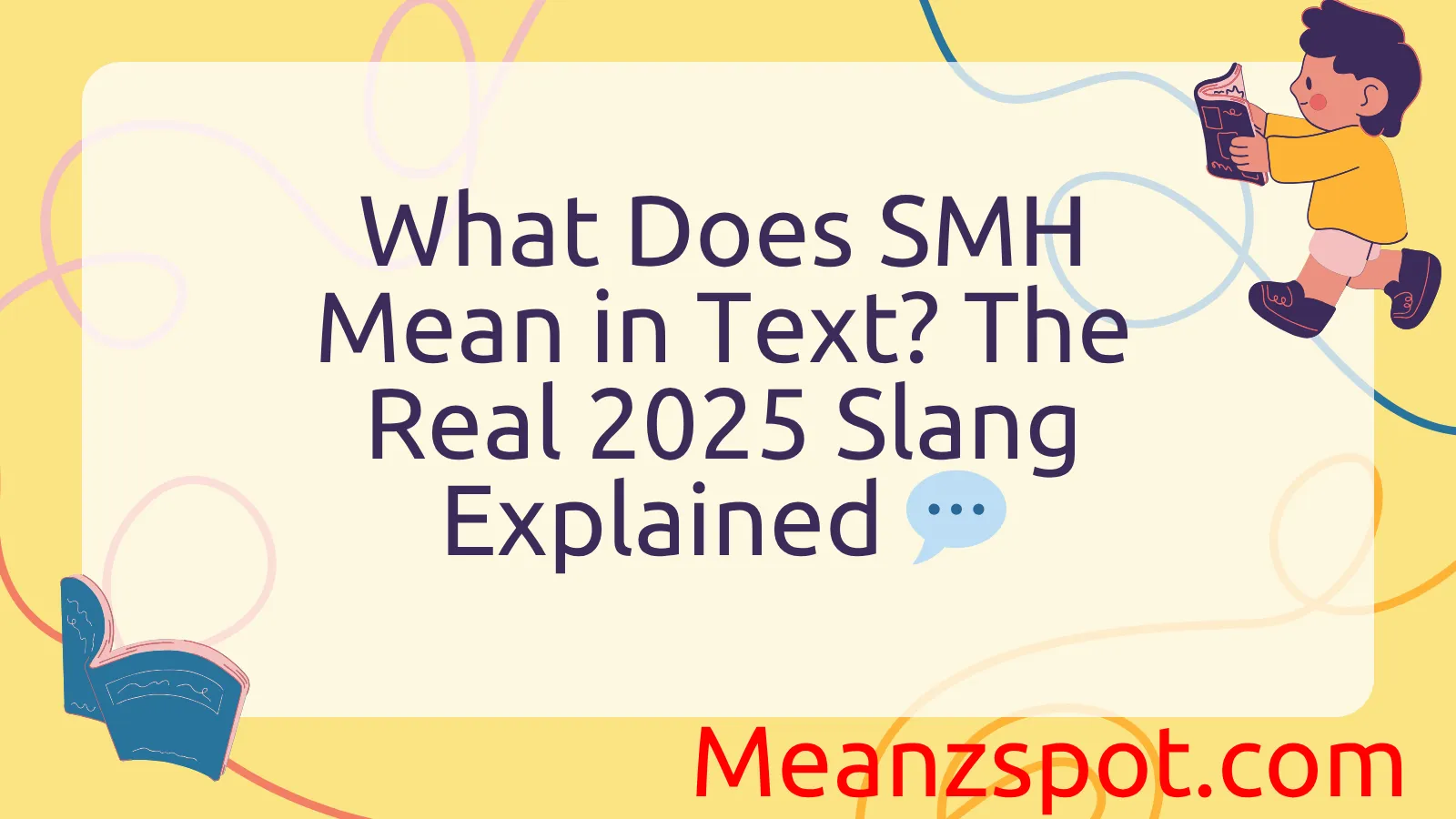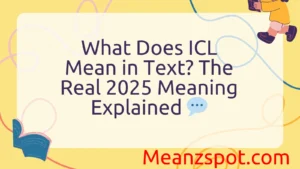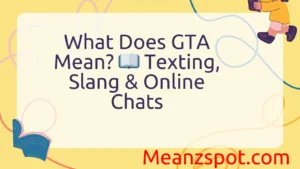Ever scrolled through your messages or social media feed and seen someone reply with “SMH” — and wondered what it means? 🤔 You’re not alone! In 2025, this abbreviation is still trending across texting, TikTok comments, and X (Twitter) posts. SMH stands for “shaking my head,” and it’s used to express disappointment, disbelief, or mild frustration in response to something silly or surprising.
Whether it’s your friend bragging about a bad decision or a viral meme that makes you facepalm, people use SMH to say “I can’t believe this” — without typing a full sentence. As digital slang evolves, SMH remains one of the most universal internet reactions, perfectly capturing the “I’m done” vibe we all feel sometimes.
Definitions & Meaning
SMH stands for “shaking my head.” It’s used to express disbelief, disappointment, frustration, or disapproval in response to something that’s been said or done. It’s a non-verbal cue translated into text form—a way to react when words might not be enough.
Imagine someone telling you they microwaved a metal fork. Instead of typing out a full reaction like, “I can’t believe you did that—that’s dangerous!” you might simply reply with “SMH.” The recipient will instantly understand that you disapprove and find their action foolish.
Examples:
- Friend: “I forgot to study for the final again.”
- You: “SMH. Good luck, I guess.”
- Coworker: “I sent the wrong file to the client.”
- You: “SMH. Hope we can fix it.”
SMH can also be used in a lighthearted or humorous way, often to respond to minor annoyances or absurdity. Tone matters, and depending on the context, SMH can range from mildly amused disbelief to serious disapproval.
Origins & History
SMH originated in internet culture during the early 2000s. It first gained popularity on message boards and early social media platforms, particularly among users of websites like Urban Dictionary and Twitter. The acronym quickly became a staple in digital communication as users sought quick ways to react emotionally without needing to write full sentences.
The earliest known definitions for SMH appeared around 2004. At that time, internet users were already using acronyms like “LOL” and “OMG.” SMH joined the club as a way to signify a physical gesture—shaking one’s head—that expressed a specific emotional response. It mirrored real-life body language but translated it into a form suited for fast-paced online conversations.
As mobile texting, Twitter, and meme culture exploded, so did the popularity of SMH. Its simplicity and clarity made it ideal for character-limited posts and sarcastic humor, helping it evolve from a niche abbreviation to a mainstream expression.
Today, SMH is a part of everyday digital lingo and appears in everything from text messages and tweets to memes and comment sections.
Usage in Different Contexts
1. Social Media
On platforms like Twitter, Instagram, TikTok, and Facebook, SMH is commonly used in reaction posts, memes, and replies. Users often employ it to react to controversial news stories, celebrity mishaps, or political statements.
Example:
“This celebrity just said the Earth is flat. SMH.”
2. Text Messaging
In texts, SMH helps convey emotion quickly without elaborating. Whether you’re chatting with a friend or replying to a group message, it’s a compact way to say “I disapprove” or “that’s ridiculous.”
3. Professional Settings
In most formal or professional communications, SMH is typically avoided due to its informal tone. However, in internal chats among colleagues, especially in startup or casual work environments, it might occasionally pop up to lighten the mood.
Example:
Slack Message: “Client asked us to change the logo again. SMH.”
4. Pop Culture
SMH has found a home in meme culture and viral videos. It often accompanies facepalm GIFs or videos of people literally shaking their heads. You’ll also see it used in song lyrics, comedy sketches, and even commentary on trending events.
The universal nature of head-shaking as a gesture makes SMH resonate across cultures and languages—another reason for its widespread appeal.
Common Misunderstandings & Clarifications
Despite being widely used, SMH is often misinterpreted—especially by those new to texting acronyms or not fluent in online slang.
1. Misreading the Acronym:
Some people mistake SMH for other meanings, such as “So Much Hate” or “Send Me Help.” While those may occasionally be used, “Shaking My Head” is by far the most recognized and accepted meaning.
2. Misjudging the Tone:
Because it lacks vocal tone or facial expression, SMH can sometimes be read as more serious or dismissive than intended. What one person uses jokingly, another might interpret as judgmental.
3. Confusing with Similar Gestures:
People sometimes mix up SMH with a “facepalm.” While both convey disapproval or disbelief, a facepalm is more about embarrassment or exasperation, whereas SMH is often used more broadly and sometimes sarcastically.
4. Overusing the Acronym:
Using SMH too often, especially in situations that don’t warrant it, can dilute its meaning or make the sender seem overly critical.
Alternatives & Synonyms
While SMH is widely understood, it’s not the only way to express disapproval or disbelief in digital communication. Here are some common alternatives:
- Facepalm – Often used in memes or emojis, signaling frustration or embarrassment.
- Sigh – Expresses disappointment or resignation.
- Bruh – Slang term often used to show disbelief or exasperation.
- Wow – Simple but effective for reacting to absurdity or surprise.
- Seriously? – Adds a questioning tone that shows disbelief.
- Ugh – Conveys frustration or irritation.
Each of these alternatives carries slightly different nuances. Choosing the right one depends on the tone and the nature of the conversation.
Frequently Asked Questions (FAQ)
Q1: What does SMH stand for in a text?
A: SMH stands for “shaking my head.” It’s used to express disapproval, disbelief, or frustration.
Q2: Is SMH rude?
A: It can be, depending on context. Used jokingly, it’s harmless. Used seriously, it can come off as dismissive.
Q3: Can I use SMH in a professional email?
A: It’s best to avoid it in formal communications. Save it for casual messages or internal team chats.
Q4: Is SMH the same as facepalm?
A: Not exactly. While both express disapproval, a facepalm typically conveys embarrassment or awkwardness, while SMH is broader.
Q5: What’s the emoji equivalent of SMH?
A: 🤦♂️ (man facepalming) or 🤷 (shrugging) are common emoji equivalents that convey a similar sentiment.
Q6: How do you pronounce SMH?
A: People usually say the full phrase “shaking my head” aloud rather than spelling out the letters.
Q7: Is SMH still popular?
A: Yes, it’s widely used across social media, texting, and meme culture and remains a staple in online slang.
Conclusion
SMH—short for “shaking my head”—has become a mainstay in the language of the internet. Born from the need for quick, expressive communication, it encapsulates frustration, disbelief, or mild disappointment in just three letters. Understanding how and when to use SMH can help you better navigate online conversations and decode digital reactions.
From text messages to trending memes, SMH continues to evolve while retaining its core meaning. So the next time someone says they tried cooking eggs on the sidewalk “just to see if it works,” you’ll know exactly what to type in response: SMH.



